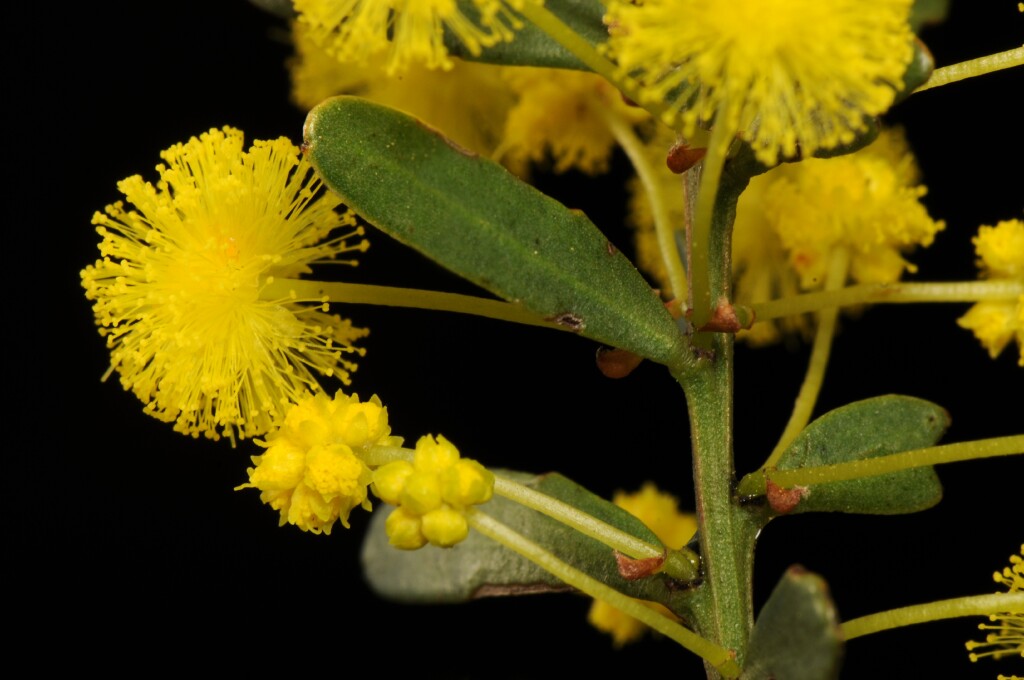Acacia acinacea
Lindl. Gold-dust WattleBushy or straggly shrub, commonly to c. 2.5 m high; branchlets more or less angled at extremities, glabrous or hairy. Phyllodes usually asymmetric, narrowly oblong-elliptic, oblanceolate, broadly obovate or circular, usually 0.4–1.5 cm long and 2–8 mm wide, glabrous or hairy, more or less obtuse, usually with an oblique, minute mucro; midrib obscure or absent, lateral veins absent; glands 2, adjacent to mucro and near or below middle of phyllode, not prominent. Peduncles 1–2 per node, 4–20 mm long, slender, glabrous, terminating a rachis c. 0.5 mm long; heads prolific, globular, 4–4.5 mm diam., 8–20-flowered, golden. Flowers 5-merous; sepals free. Pods circinnate to irregularly twisted or spirally coiled, 3–4.5 mm wide, crustaceous, glabrous; seeds longitudinal, more or less oblong, 4–5 mm long, shiny, dark brown, aril clavate and a quarter to a half the length of the seed. Flowers Jul.–Nov.
LoM, MuM, Wim, GleP, VVP, VRiv, MuF, GipP, OtP, Gold, CVU, GGr, DunT, NIS, EGL, HSF, HNF, VAlp. Also SA, NSW. Widespread though all but eastern and southern Victoria, growing mostly in sandy or gravelly soils in hilly country in eucalypt woodland, heathland and open mallee scrub.
Extremely variable in phyllode shape, size and indumentum. Specimens with more or less orbicular phyllodes, and sometimes treated separately as A. rotundifolia, may be similar in phyllode shape and size to A. glandulicarpa (see notes under that species). The few specimens with longer than normal phyllodes (i.e. 15–25 mm) may resemble A. microcarpa, but A. acinacea is readily separated from that species by its circinate to coiled or twisted legumes, mucronate phyllodes, and smaller glands (the lowermost 0.2–0.5 mm diam. and not recessed).
Entwisle, T.J.; Maslin, B.R.; Cowan, R.S.; Court, A.B. (1996). Mimosaceae. In: Walsh, N.G.; Entwisle, T.J., Flora of Victoria Vol. 3, Dicotyledons Winteraceae to Myrtaceae, pp. 585–658. Inkata Press, Melbourne.
 Spinning
Spinning


